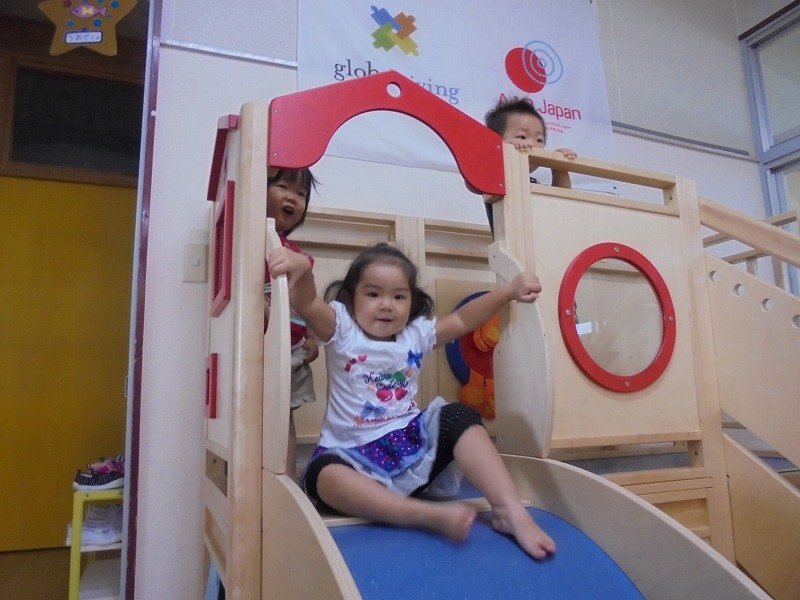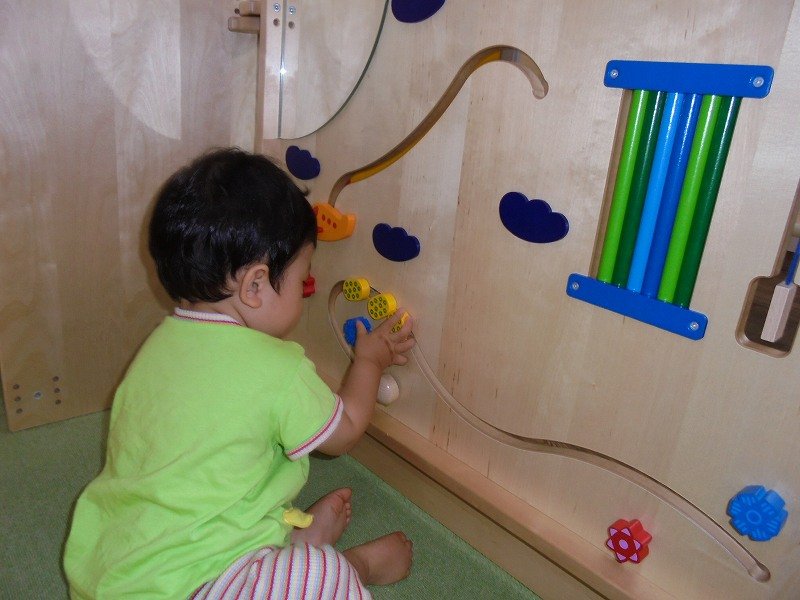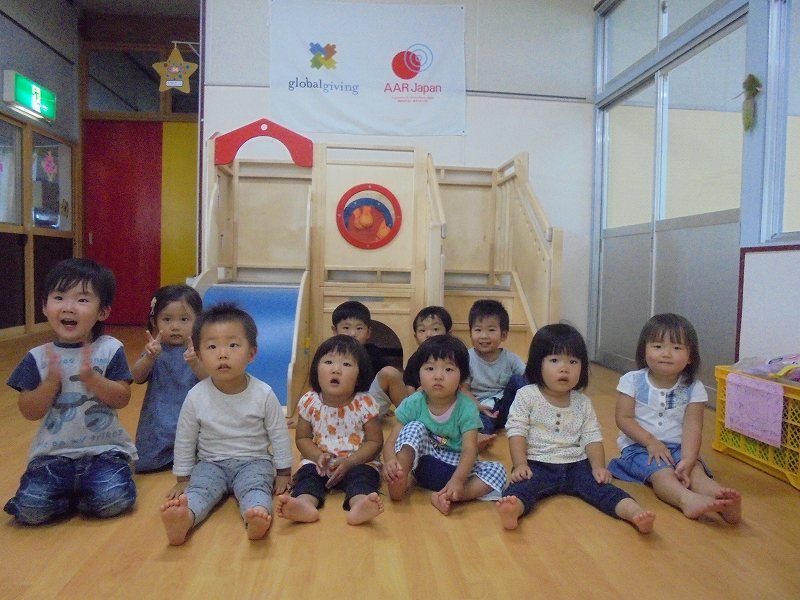By Anna Kajino | Programme Coordinator
Tomioka Kindergarten and the evacuee children who have been displaced to Aizu-Wakamatsu City from Tomioka Town due to a high risk of radiation exposure received the long waited arrival of the play equipment imported from Scandinavia. The principal and teachers in consultation with AAR Japan chose this equipment for very specific reasons. First, it constitutes a myriad of unique subparts attached to it, which allows multi-dimensional experience for children to expand their creativity. Several stairs make the way through a platform to a slide leading children to walk through a variety of sub-parts along the way such as built-in blocks in different colors and shapes, and a circular window. Teachers often find children experimenting and exploring, peeking into the window to see the other side or sitting on the platform to play with the blocks even past the recess. Second, the equipment is made detachable and transferable. It ensures the sustainable long-term use for when the radioactive contamination subsides in Tomioka Town enabling children and the kindergarten to move back home along with the equipment for the next generation. Third, the team chose the wooden made rather than iron or steel. The reason being the principal hoped for the children to have as much exposure to the sensation of “wood” as she could possibly provide under the roof because they cannot go outside to play. Such an indoor play equipment as this one is enormously appreciated by the community where seasonal snowstorms characterize the city as the climate imposing limitations on the outdoor mobility consequently restricts children’s activities to the indoors.
The team initially intended for children in the age range of 1 – 2 years old to utilize the equipment. Nonetheless, children of all ages enrolled in the kindergarten from the 3 year-olds to the 6 year-olds also love to play with it. A bright smile came back on the faces of the evacuee children who had to leave all the toys and play equipment back home due to the radiation contamination.
One of the caretakers at the kindergarten, Mr. Kashimura marvels at the ingenious design conducive to child development which is very unique to the Scandinavian made play equipment, “These small holes on fences on both sides of the stairs I thought were just an artistic design turned out to be assistive holes that facilitate small children to climb up the stairs. Children who are not tall enough to reach handrails grab the holes to support themselves as they climb.” Ms. Horiuchi, the principal, expresses her gratitude saying “I am beyond thankful that our earnest petition to acquire any play equipment for children was fulfilled thanks to GlobalGiving and everyone who contributed. I consider this gift as a reward for our daily efforts and all the hard work to protect our children. Thank you so very much. ”
Four and a half years have passed since the 3.11 disaster. Concurrently, the evacuee children who were just 1 or 2- year-old toddlers at the time of relocation grew up to be preschoolers (K5, K6). They have little time left to spend at Tomioka Kindergarten until graduation. Tamioka Town located within a 20 km radius of the Fukushima Nuclear Power Plant continues to be subject to the town-wide evacuation order that is still effect, obliging the evacuees to live in temporary housing. Meanwhile, the town aims for April of 2017 to initiate the repatriation process. There are teachers at Tomioka Kindergarten who relentlessly miss their hometown and beaches they had so cherished since young. On the other hand, there is a tendency among families with small children to make their long-term settlement in Aizu-Wakamatsu City due to the debilitating effect of radiation they would otherwise be exposed to. Some families have already purchased their new homes. In the midst of transition where many evacuees stand at the crossroads in the post-disaster period, Ms. Horiuchi hopes to keep strong community solidarity to continue the operation of Tomioka Kindergarten.
Project reports on GlobalGiving are posted directly to globalgiving.org by Project Leaders as they are completed, generally every 3-4 months. To protect the integrity of these documents, GlobalGiving does not alter them; therefore you may find some language or formatting issues.
If you donate to this project or have donated to this project, you can receive an email when this project posts a report. You can also subscribe for reports without donating.


